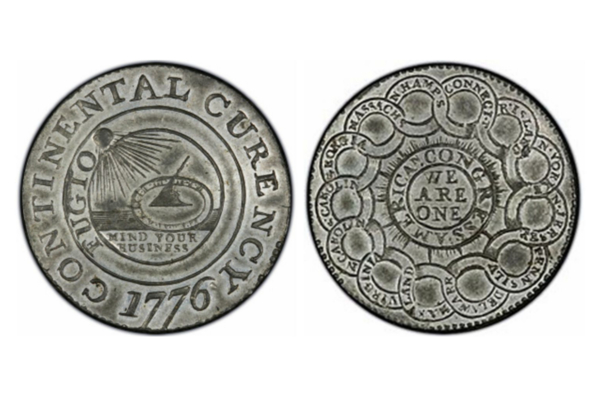Recently, a 1776 American coin found in a candy jar was sold at a high price of 25,000 pounds at an auction house in the UK.
The rare coin, known as the “Continental Dollar,” was authorized for issuance by the Continental Congress of the United States during the Revolutionary War. It has a diameter of about 38 millimeters and is made of pewter, an alloy that typically contains 85% to 99% tin, along with small amounts of copper, antimony, bismuth, and lead. It was minted in the year of American independence, 1776.
The production of this coin was limited, with an estimated total of around 6,000 coins minted, and currently, only about 100 are known to exist.
On October 3rd, this coin was sold at an auction held at Wotton Auction in Gloucestershire, England, fetching a price as high as 25,000 pounds (about 32,000 US dollars).
Due to the extreme rarity of this coin and the prevalence of counterfeit coins, it underwent authentication in the US before the auction. A professional coin grading organization, the Numismatic Guaranty Company (NGC) based in Sarasota, Florida, confirmed it as an authentic Continental Dollar.
The design of the Continental Dollar was created by Benjamin Franklin and features three concentric rings on the obverse side with an image of a sundial and the sun, along with the inscription “CONTINENTAL CURRENCY.” The distinctive pattern on the reverse side consists of 13 interlocking rings symbolizing the 13 British colonies, with the two central rings inscribed with “WE ARE ONE” and “AMERICAN CONGRESS.”
Joseph Trinder, the auctioneer at Wotton Auction, explained to local media that this precious coin was discovered in a seller’s candy jar.
He said, “This coin is one of the top five discoveries of my career and something that auctioneers across the country dream of.”
“We found it in a candy jar brought to us by a private vendor, filled with various interesting items including coins, jewelry, carvings, fossils, and other valuable items, with this exceptionally rare Continental Dollar ‘lying quietly at the bottom’ of this large jar.”

